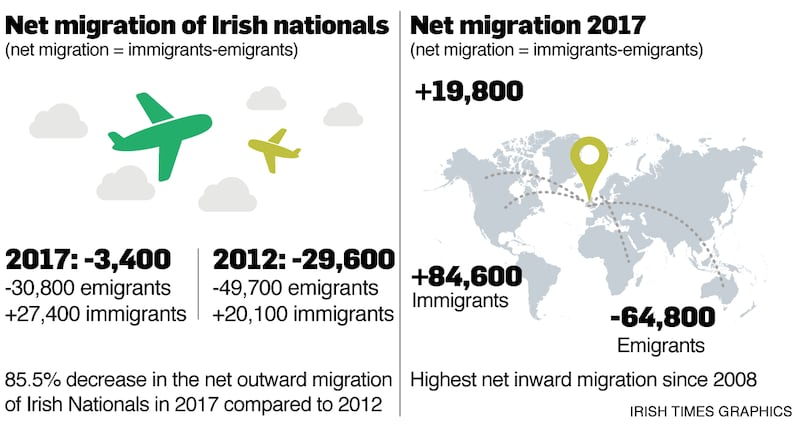In the globalised world we live in today, migration flows are heavier than they have ever been. In Ireland, economic booms and busts have always had a significant impact on emigration and immigration, and this latest cycle since the mid-2000s has been no different.
The economy has improved dramatically in the past four years since emigration out of Ireland peaked in 2012, with unemployment now at just 6.4 per cent. But Irish people continue to leave Ireland in very significant numbers, according to new data from the Central Statistics Office, which shows 30,800 Irish people emigrated in the year to April 2017, outnumbering those returning home by 3,400.
But how reliable are those figures?
Keeping track of the numbers coming and going from Ireland is a complex task for statisticians. Unlike many other countries, Ireland does not have a population register requiring people to log their place of residence.
The migration statistics published by the CSO each year are usually estimates, based on data gathered from a sample of 26,000 households in the Quarterly National Household Survey which are grossed up to give a national estimate. When the census is carried out every five years, more specific data from every household in the Republic is used to correct the estimates retrospectively.
Last year, before the census data had been crunched, the CSO estimated that 60,500 Irish people had moved home between April 2012 and April 2016, when in fact, according to census-corrected figures published on Thursday, 99,500 did. It is a very significant difference of more than 64 per cent.
The rise in the figures will certainly be welcomed by groups working to encourage Irish emigrants to return home. But how could the CSO estimates be so wrong? And what implications could this have had on policy?

According to CSO demographic statistician James Hegarty, recording the number of Irish nationals returning to the country from abroad poses a particular challenge.
“It is not the case that people emigrate and are gone forever anymore,” he says. “Things are different now, and that makes our job much harder.”
Between censuses, they have to rely on a combination of diverse data sets, including visa data from popular destinations such as Canada and Australia, national insurance numbers in the UK, figures from the Garda National Immigration Bureau, and Irish PPSN data. The latter is the most accurate indicator, but only for non-Irish nationals.
Between the 2011 and 2016 censuses, the CSO population estimates were out by 65,000 in total, which, given the population of Ireland in 2016 was 4.76 million, is an error of 1.4 per cent overall in the five-year period.
“In that context I think we are doing okay, but always striving to improve,” Hegarty says.
Following the 2016 census results, the CSO is now looking at alternative data sources in an effort to improve accuracy, especially in the way it measures returning Irish citizens. One way to do this is to include the full suite of migration questions as part of other CSO social studies, such as a major upcoming survey on the health of the nation which will be carried out on a much larger sample than the quarterly survey.
Support needs
The overall figures may not have been too far off, but the biggest anomalies are in the figures for returning Irish emigrants, who may have specific support needs. Many more have returned than we previously thought, meaning much higher numbers have been affected by issues such as their no-claims bonuses not being recognised for car insurance, difficulty accessing mortgages and other loans, and other issues which are very specific to them.
The Government commissioned an economic report on these barriers in August, but by the time the findings are published, and policy changed, it could be too late to make a difference to the majority of “generation emigration” who may have already returned, or indeed, come and gone again.












